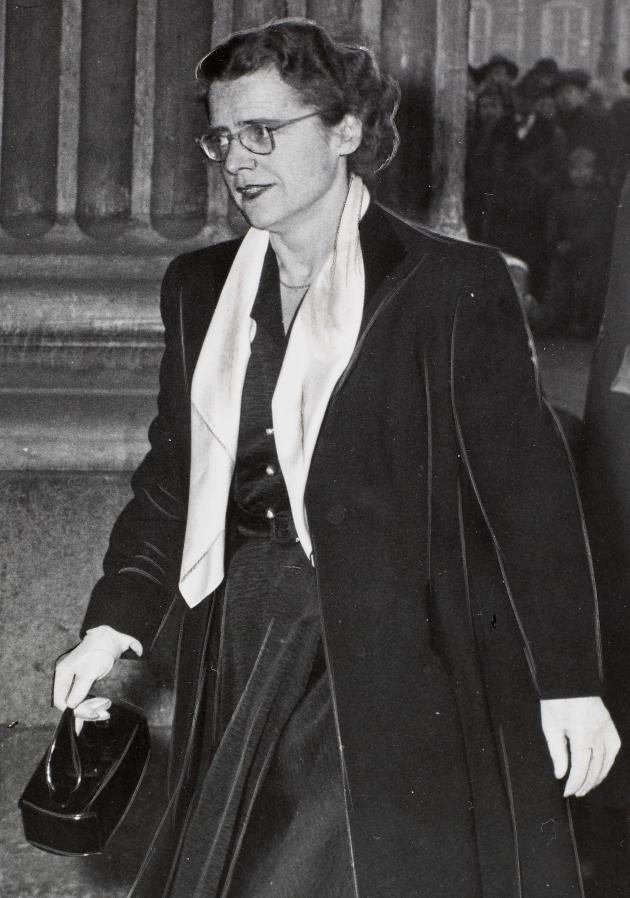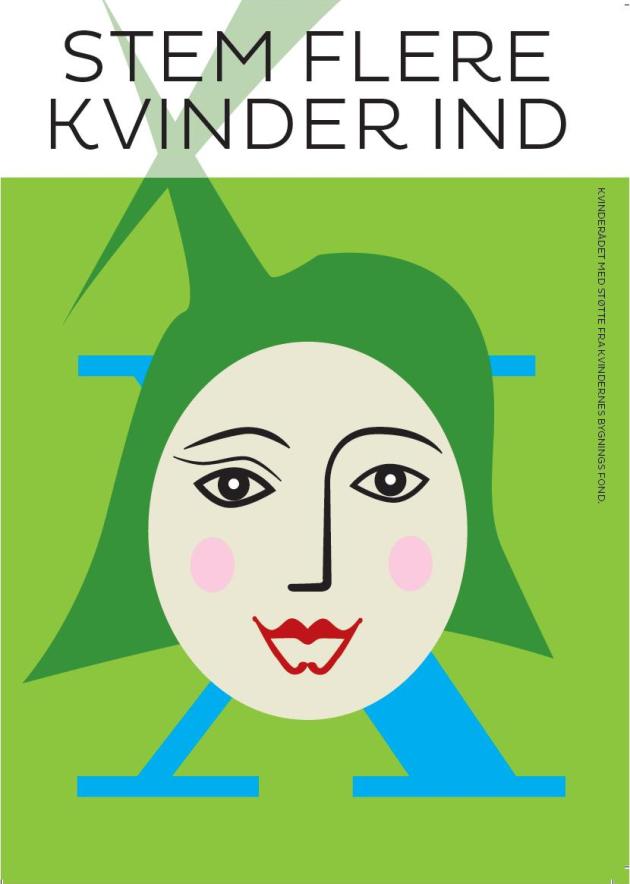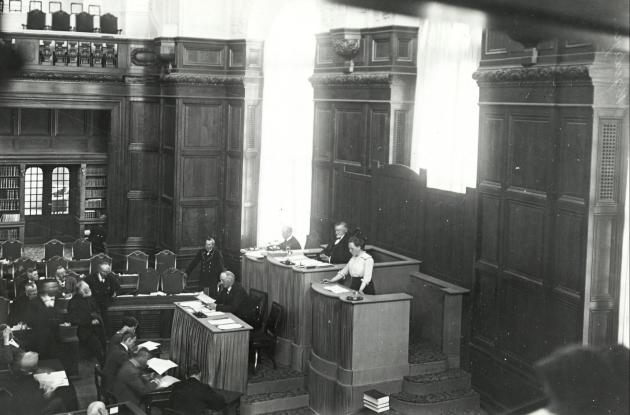More women in Parliament, thank you!
Since 1918, the proportion of female politicians in Parliament had been 2-5%. In 1943, the women's movement's patience ran out and the first "Vote for a Woman" campaign was launched.

Photo: Ophav ukendt
The general election of 23 March 1943 sent shock waves through the women's movement. Only two women were elected to Parliament. It was two women less than in the last election in 1939 and the lowest result since the constitutional amendment in 1915, which gave women political suffrage and eligibility. So far, the women's movement had put its trust in the fact that women's representation would slowly increase by itself with each election. The result in 1943 was reflected in the fact that a total of only 29 women were nominated throughout the country, and that for the majority they were nominated in non-eligible positions on the candidate lists.
Something had to be done! The Danish Women's Society immediately set up a committee to analyse what would be needed if the failure was not to be repeated in the next election. The blame for the low representation of women was partly placed on the women themselves - they were too little interested in politics - partly on the inability or desire of the political parties to field female candidates.
The Danish Women's Society set up study circles throughout the country on social policy topics, which were to arouse women's interest in and knowledge of politics. In the autumn of 1944, a new association "Folkevirke" was founded with the same purpose, with what would later become Minister Bodil Koch at the helm.
At the same time, the impatience with the political parties increased. And the chairman of the Danish Women's Society, Ingrid Larsen, wrote an editorial with the headline Really! - now!
, which called for the parties to act by introducing gender quotas on the lists:
“"The rule could be that every time 2 men were standing for election, a woman would then stand up too". ("The Woman and Society" 15 June, 1945).
“
Parliamentary elections 1945
Up until the general election in 1945, all sails were set. The Danish Women's Society launched a "Vote for a woman" campaign, which consisted of posters, leaflets and public meetings, which were to make voters aware of the skewed gender distribution and make them vote for women. And women's representation increased from 1% to 5%. 8 women were elected, and this time the parties together had more than doubled the number of women on the electoral rolls. Ingrid Larsen called the election result Women's Election Victory
, but also put a little fly in the ointment. The two largest governing parties, the Social Democrats and the Liberals, had only elected one woman between them! The remaining 7 were elected for the Danish Communist Party (3), the Conservative People's Party (3) and the Radical Left (1)

Photo: Kvinderådet
After 1945
For the next 40 years, from 1945 to 1988, the representation of women steadily increased from 5% to 30% in 1988. Most elections saw only a small increase, but in some elections such as the 1979 election, representation increased by as much as 6 percentage points. For the last 30 years from 1988-2019, the representation has been between 30-39%.
Since 1945, the women's organisations have arranged election meetings and created "Vote for a woman" campaigns for most elections. And the discussion about whether it's the women's own fault or the parties' for the lack of female representation has also continued. Some parties followed Ingrid Larsen's call for gender-quoted electoral lists. This applied to the Socialist People's Party, which from 1987– 1990 introduced gender quotas for the parliamentary elections. In the 2019 election, however, only the the Red-Green Alliance used this method.
